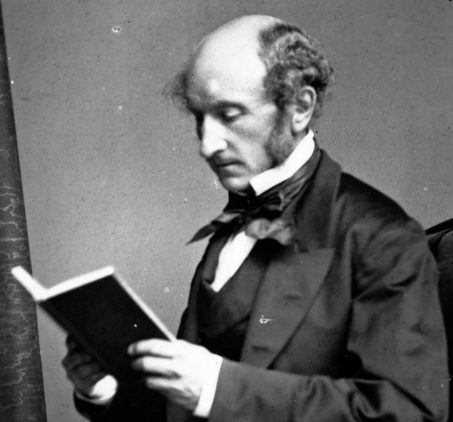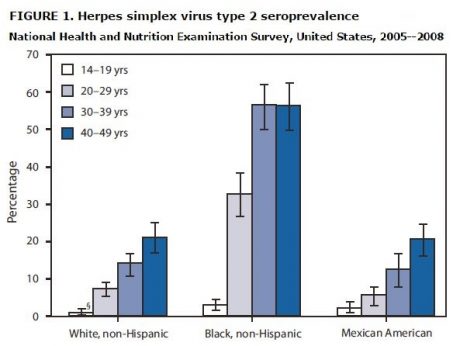Posted on | August 18, 2025 | No Comments

From the headline, you might have expected me to illustrate this post with a picture of college girls twerking in their bikinis on Spring Break in Florida, so why did I choose John Stuart Mill instead?
In his most famous work, On Liberty, Mill famously described “the tyranny of the majority,” by which he meant not merely the possibility of despotic action under democratic governments, but more specifically what he called “the moral coercion of public opinion.” In other words, although we might be free to do as we please without fear of legal punishment, at the same time, we are discouraged from acting in any way that is unpopular or unconventional because we fear the disapproval of others. Mill called this “social tyranny,” and one can imagine what he had in mind when you recall that he was writing in England in the mid-1800s, during the Victorian era — a very uptight kind of environment.
As a conservative, of course, I am naturally prejudiced in favor of the kind of “repressive” social norms of Victorian England. Looking around the 21st century, we could use a lot more of that Victorian prudery.
What got me thinking along these lines was watching YouTube videos by Jedediah Bila. Most of y’all will remember her from Fox News, but in the past four years, Jedediah has moved to Texas with her husband and son and is now doing her own thing online — and it is awesome!
A lot of her content is about “gender dynamics,” and she’s laying down the cold truth about the self-defeating nature of what passes for “empowered” behavior among young women. Here she is with guest Andrew Wilson examining the phenomenon of grossly slutty behavior by girls on Spring Break in Daytona:
Obviously, girls who act like this — racking up a “body count” of 12 in a single week? — have no fear of the kind of repressive social tyranny that John Stuart Mill criticized in Victorian England. Why is that?
Even though these 304’s probably don’t consider themselves feminists, Andrew Wilson points toward the feminist-influenced idea that it’s unfair to expect women to avoid promiscuity because (supposedly) there is no such expectation for men. The attitude is, “Guys do it, why can’t we?” Refuting this attitude is as simple as pointing out the basic arithmetic — “it takes two to tango” — and getting young women to understand that men have no incentive to be monogamous when so many young women are promiscuous. By consenting to easy hookups, such women make themselves part of the problem that so many young women nowadays complain about, i.e., men who “won’t commit” to marriage.
Let us not overlook, however, the role that lack of proper adult supervision plays in this kind of behavior. If your teenage daughter is shamelessly hooking up with 12 guys during Spring Break? You have failed as a parent, and that failure began long before your daughter became a teenager. Every girl naturally desires to be “popular,” to fit in with her peers, and wise mothers strive to teach their daughters to resist such pressure. A well-raised girl will fear more than anything else her mother’s disapproval. From a young age, she has been taught to avoid inappropriate behavior. Internalizing parental values provides her with a sort of moral gyroscope, a self-guidance system that makes her capable of discernment, so that she does not mindlessly follow the crowd.
When we see these brainless sluts smiling for the camera as they boast of their Spring Break “body count,” we are witnessing the consequences of children being raised without proper parental authority.
“I’m disgusting. Maybe they were all right about me. Maybe I am a big old whore.”
— Ella Dawson
Surely you haven’t forgotten Ella Dawson, who decided that the 2016 election was about her and her herpes infection? Someone would be doing a great favor for teenage girls if they would show them the “Rake’s Progress” of Ella Dawson’s life. She was a “pro-sex feminist” at Wesleyan University (now $98,382 a year, including room and board), and has recalled the attitude she brought with her to campus as a freshman:
“There was this binary view, at least in my mind as an 18-year-old, of, you’re either someone who believes sex is part of a relationship and you’re judgmental of casual sex, or you are a sexually empowered young woman who screws whoever she wants to and does whatever she wants and can have sex without emotions,” Dawson said in an interview with The Argus. “And as a result, I was super defensive of hookup culture itself because I interpreted criticism of hookup culture as criticism of a free sexuality.”
The predictable consequences are related in Ms. Dawson’s 2022 roman à clef (a “novel” that’s really a memoir), titled Life Ruiner:
Set mostly at Wesleyan in Dawson’s junior and senior years in 2013 and 2014, “LIFE RUINER” takes the reader through a semi-linear progression of her relationship with Blake (all names were changed to protect privacy), an attractive yet troubled party acquaintance turned sexual and romantic partner. . . .
[E]verything changes for Dawson when she wakes up to itchy raised bumps on her labia, which are ultimately diagnosed as genital herpes. From this point forward, her relationship with Blake slowly devolves into cycles of emotional abuse and manipulation as he also receives a herpes diagnosis and begins to threaten suicide. When Blake reaches an emotional low at the end of the summer and the two break up, Dawson begins to replace her feelings of dirtiness and shame surrounding her STI diagnosis with understanding and empowerment. Back on campus, though, she and Blake begin hooking up again until Blake nearly overdoses on prescription drugs and alcohol and Dawson discovers that he has physically abused his ex-girlfriend, Kris.
Here’s a cruel irony — although she had styled herself an advocate of knowledge about sexuality, Ella Dawson apparently failed to realize that condoms don’t protect against herpes. In all her preaching about “safe sex” and everything, somehow this fact had escaped her notice.
Speaking of facts, let me share a few facts about herpes:
A 2010 report from the Centers for Disease Control and Prevention found that the herpes rate “was nearly twice as high among women (21%) as men (11%), and more than three times higher among African-Americans (39%) than whites (12%). The infection rate among African-American women was 48%.” For obvious reasons, promiscuity increases the risk of infection, and the CDC found that about 27% of those who reported 10 or more partners are infected with herpes.

So, Ella shows up at Wesleyan as a sort of apostle of sexual liberation, and by the time she graduates, she’s a used-up slut with herpes. She decides to proclaim this to the world, undertaking a crusade to “destigmatize” herpes, and is so successful that she (a) attracts national attention and (b) makes her name synonymous with herpes.
No, really, Google it — might as well call it “Ella Dawson Disease.”
When last we heard from her, Ella was calling herself “bisexual” or “queer,” by which I presume she means that because guys are no longer interested in her, she’s now desperately trying to find a girlfriend to diddle her diseased genitalia. Rather pathetic, but of one thing Ella is certain: It’s not her fault. No, she is a victim of forces beyond her control. “Valentine’s Day hits different this year,” she declared in February:
Most of us were socialized to imagine our happily-ever-after a certain way: marriage, children, homeownership, a golden retriever. This dream was never attainable for everyone thanks to structural inequity and a royally fucked economy, but in 2025 it feels even further out of reach for some, and like a nightmare to others. It is difficult to celebrate love and hope at a time when we are losing the freedom to make choices about our bodies, our futures, and our identities. . . .
(That dastardly Trump is to blame!)
As a childfree queer woman, I am not in the mood for love this Valentine’s Day. I’m feeling cynical and scared. At some point over the last decade I morphed into a heteropessimist. . . .
(She’s “morphed,” you see!)
I am pessimistic about the state of heterosexual dating. For a myriad of reasons, it is largely cis straight men who make heterosexual dating a cursed experience. . . . But my friends and I have been sexually assaulted and abused by casual partners and life partners alike. Almost every woman I care about who dates men has had a horrifying experience recently. Roughly once every six months I get a phone call from a female friend scared for her life because a man who seemed trustworthy suddenly revealed himself to be anything but.
Even men who aren’t violent still commit endless slights out of entitlement and privilege . . .
As a bisexual woman, I am making an effort to decenter cis men in my life and seek out partners of other genders. I want out of the heteropatriarchal monogamous script . . .
See, it’s the system — “structural inequity” and “the heteropatriarchal monogamous script” — which Ella blames for her woes. Her own bad judgment has nothing to do with it. All those “cis straight men” just abusing her (and her friends, too), and there’s nothing women can do about it. Has Ella ever contemplated the conundrum of why feminism, despite its rhetoric about women’s “empowerment,” so often leads women to be just like her — lonely, bitter and hopeless?
Probably not. Like feminists generally, Ella Dawson’s whole worldview is based on the idea that she is always right, and men are always wrong, and therefore anything bad that happens to her is not her fault.
So the teenage sluts go twerking around Daytona Beach, heedless of the future, convinced that they will never suffer any harmful consequences of their behavior, but if they do — well, it’s not their fault. And I wonder what John Stuart Mill would say if he could see how things have turned out. Those Victorian prudes were right, you know.
Save on Groceries and Everyday Essentials










